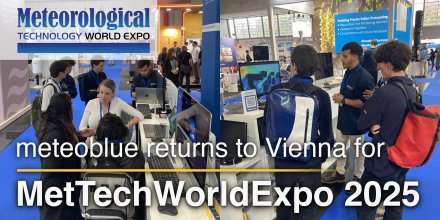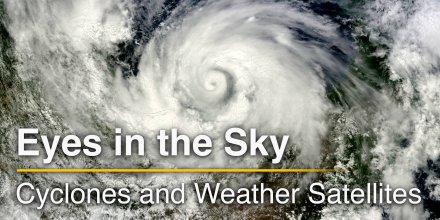
Join meteoblue at Meteorological Technology World Expo 2025
Meet meteoblue (and Windy) at Meteorological Technology World Expo 2025 and discover the latest weather and climate solutions, complemented by coffee and delicious Swiss chocolate!

Meet meteoblue (and Windy) at Meteorological Technology World Expo 2025 and discover the latest weather and climate solutions, complemented by coffee and delicious Swiss chocolate!

Satellites have transformed how we monitor our planet, especially when it comes to extreme weather. From hurricanes and typhoons to floods and wildfires, modern weather satellites can track storm evolution in real time and help assess damage after a disaster has passed.
|
|
|||||||||
|---|---|---|---|---|---|---|---|---|---|
|
Icon
|

|

|

|

|

|

|

|

|
|
|
Temperature (°F)
|
|||||||||
|
Temperature felt (°F)
|
40° |
39° |
43° |
56° |
62° |
59° |
48° |
43° |
|
|
Wind direction
|
ENE |
ENE |
ENE |
SSE |
W |
SW |
NE |
ENE |
|
|
Wind speed (mph)
|
ENE
2-7
2-7
|
ENE
3-8
3-8
|
ENE
2-7
2-7
|
SSE
2-5
2-5
|
W
4-6
4-6
|
SW
2-7
2-7
|
NE
4-7
4-7
|
ENE
4-8
4-8
|
|
|
Precipitation (in/3h)
|
-
0%
-
|
-
5%
-
|
-
0%
-
|
-
5%
-
|
-
5%
-
|
-
5%
-
|
-
5%
-
|
-
0%
-
|
|
|
Precipitation probability
|
0%
|
5%
|
0%
|
5%
|
5%
|
5%
|
5%
|
0%
|
|
|
Precipitation hourly
|
|||||||||
|
Precipitation hourly
|
No precipitation expected |
||||||||
|
rainSPOT
Precipitation distribution within 20 km
|
|
||||||||
Overnight into Tuesday it is foggy or elevated fog occurs. Early in the day the fog is slowly lifting but it remains cloudy. In the afternoon a few clouds are expected. The sun will not be visible. Temperatures peaking at 64 °F. During the night and in the first hours of the day light air is noticeable (1 to 4 mph). For the afternoon blows a light breeze (4 to 8 mph). Winds blowing at night and in the morning from East and during the afternoon from West. The weather forecast for 47. 83°N 6. 53°E for Tuesday is expected to be very accurate.
Pressure: 1023 hPa
Timezone: CEST (UTC +02:00h)
The real-time satellite image combines visible light during daytime with infrared radiation during nighttime. At night, the image is not dark as infrared radiation can detect temperature differences. Unfortunately, low clouds and fog are difficult to distinguish from ground temperatures and thus can be almost invisible during the night. Meteosat satellite images for Europe are updated in real-time every 5 minutes. GOES-16/GOES-17 (North & South America) and Himawari (Asia) images update every 10 minutes.
Precipitation is estimated from radar and satellites. Precipitation estimates from satellites are less accurate at night than during daytime.
© 2025 meteoblue, NOAA Satellites GOES-16 and EUMETSAT. Lightning data provided by nowcast.
The location marker is placed on 47.83°N 6.53°E. This animation shows the precipitation radar for the selected time range, as well as a 2h forecast. Orange crosses indicate lightning. Data provided by nowcast.de (available in USA, Europe, Australia). Drizzle or light snow fall might be invisible for the radar. Precipitation intensity is colour coded, ranging from turquoise to red.

Meet meteoblue (and Windy) at Meteorological Technology World Expo 2025 and discover the latest weather and climate solutions, complemented by coffee and delicious Swiss chocolate!

Satellites have transformed how we monitor our planet, especially when it comes to extreme weather. From hurricanes and typhoons to floods and wildfires, modern weather satellites can track storm evolution in real time and help assess damage after a disaster has passed.
Advertising is essential to maintain our free website with unique detail and accuracy.
Please whitelist www.meteoblue.com on your ad blocker or consider buying one of our products:
Already have a subscription?
Then please login.